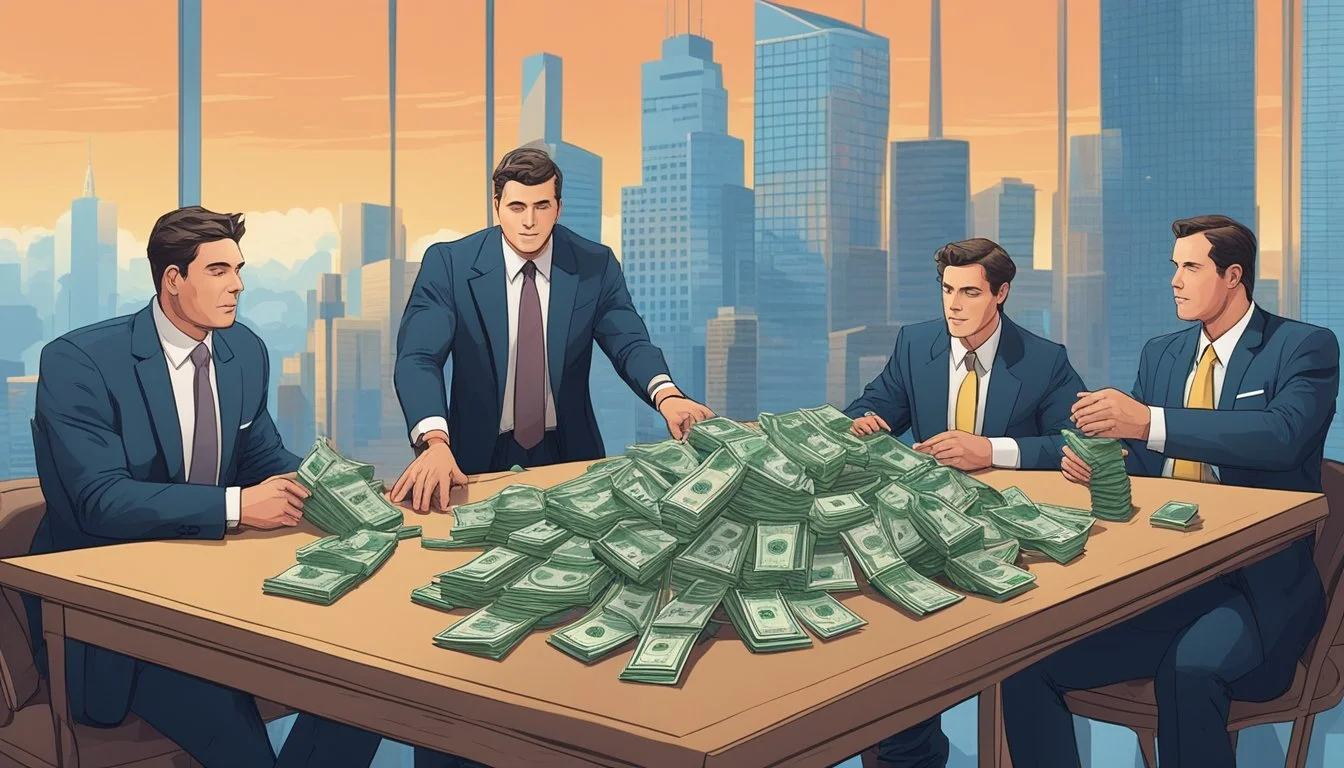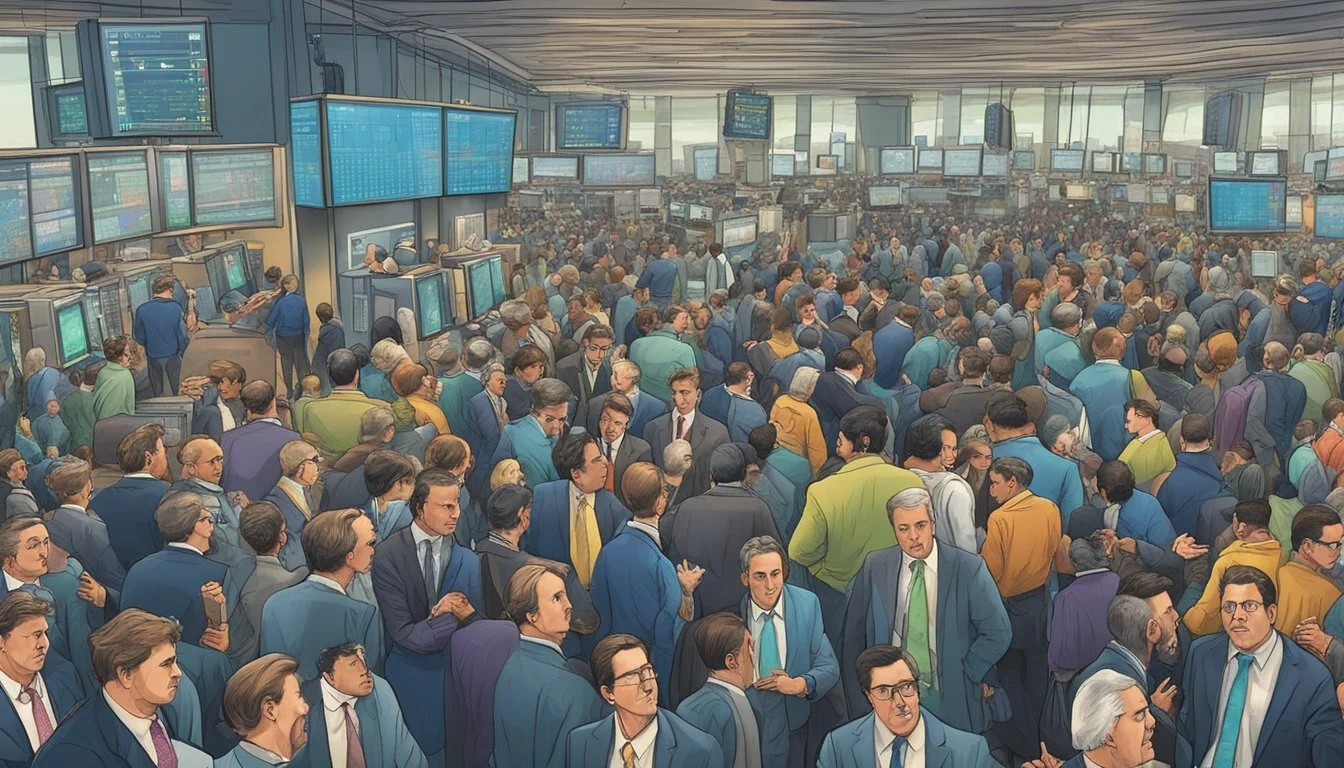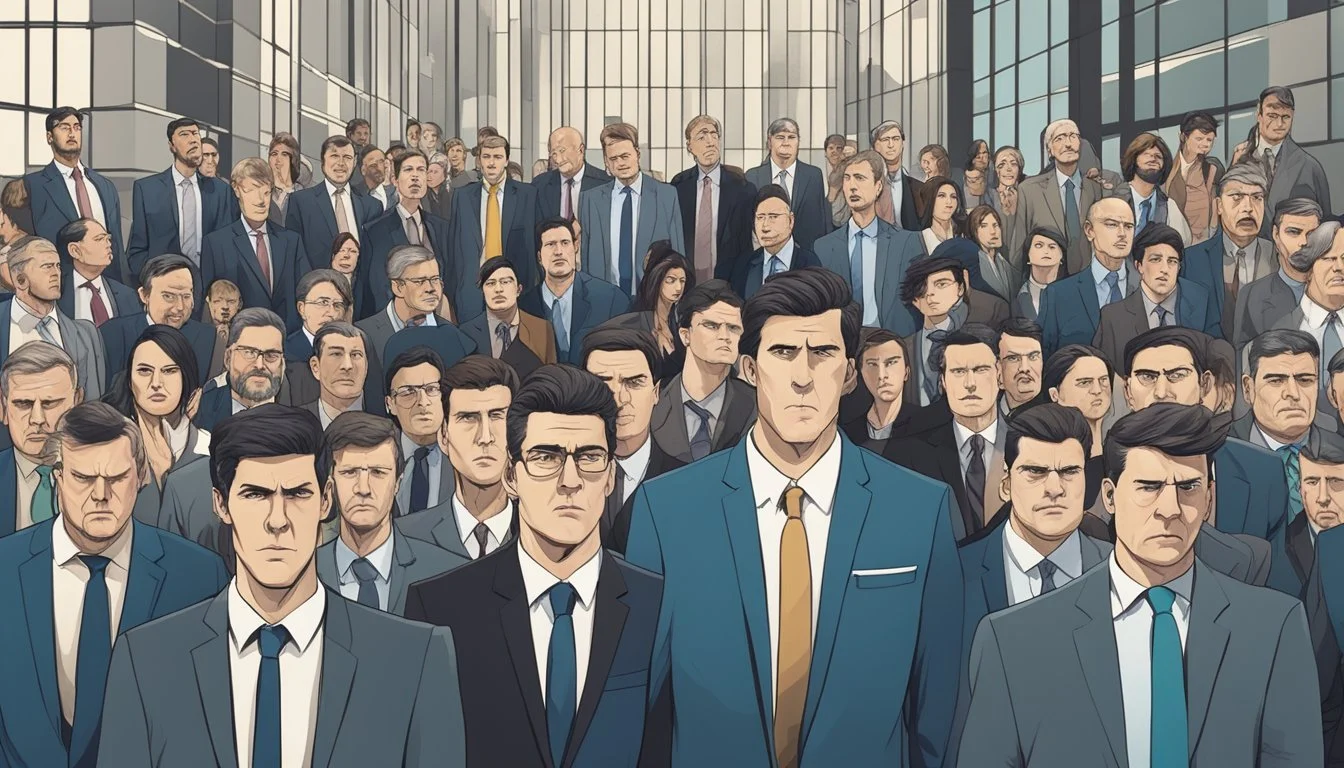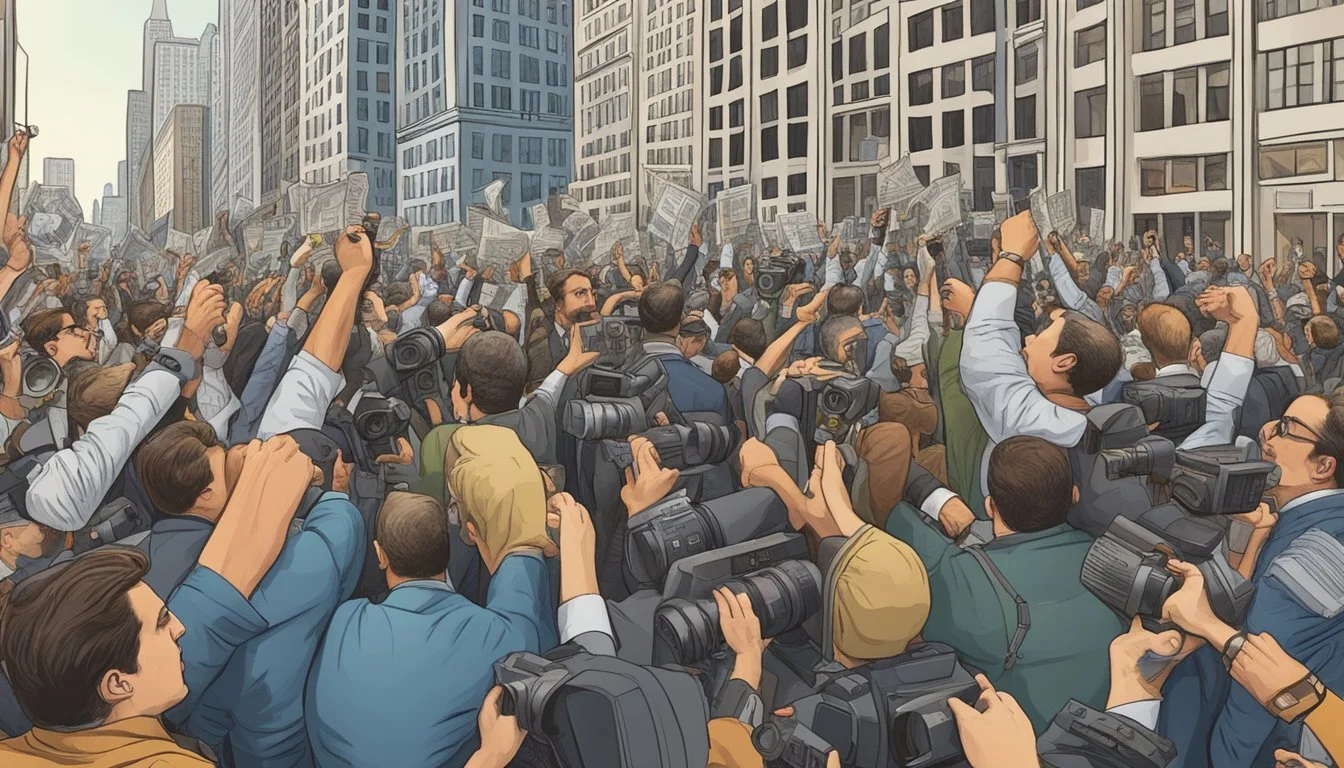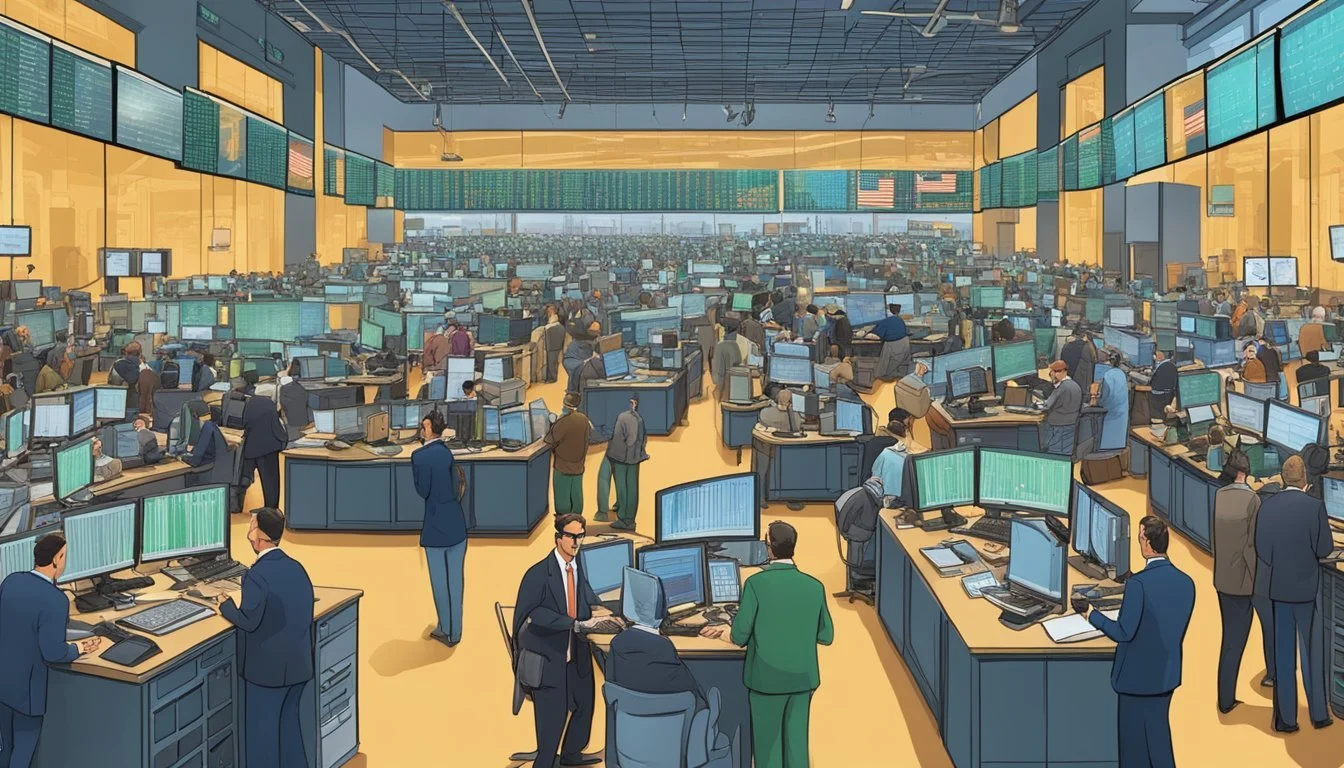Exposing Corporate Greed: The Real Events of The Big Short
Wall Street's 2008 Financial Crisis Revealed
"The Big Short" exposes the reckless practices and corporate greed that led to the 2008 financial crisis. Based on Michael Lewis's book, the film follows a group of investors who foresaw the impending housing market collapse and profited from it. Through their eyes, viewers gain insight into the complex financial mechanisms and irresponsible lending that fueled the economic disaster.
The movie reveals how major banks and mortgage lenders prioritized short-term profits over long-term stability, ultimately bringing the global economy to its knees. It highlights the actions of real-life figures like Michael Burry, who recognized the housing bubble's unsustainability and bet against it. The story serves as a stark reminder of the consequences of unchecked greed in the financial sector.
By simplifying intricate financial concepts, "The Big Short" makes the events leading up to the crisis accessible to a wide audience. It sheds light on the systemic failures and lack of oversight that allowed risky practices to flourish. The film's portrayal of these events offers valuable lessons about the importance of financial regulation and the potential consequences of prioritizing profits over responsible business practices.
Overview of 'The Big Short'
'The Big Short' offers a gripping portrayal of the 2008 financial crisis through the eyes of a few prescient investors. It exposes the risky practices of major banks and unpacks complex financial concepts for a general audience.
Background on the Financial Crisis
The 2008 financial crisis stemmed from the U.S. housing bubble. Banks issued risky subprime mortgages and bundled them into seemingly safe securities. These mortgage-backed securities were sold to investors worldwide.
As housing prices fell, many homeowners defaulted on their mortgages. This triggered a chain reaction, causing the value of mortgage-backed securities to plummet. Major financial institutions faced massive losses.
The crisis led to the collapse of Lehman Brothers and a global economic downturn. Governments had to bail out banks to prevent further economic damage.
Synopsis of the Film
'The Big Short' follows several investors who predicted the housing market's collapse. The film is based on Michael Lewis's 2010 non-fiction book of the same name.
It tracks parallel storylines of characters who discover the instability of the housing market. They decide to "short" or bet against mortgage-backed securities.
The movie uses creative techniques to explain complex financial concepts. Celebrity cameos and fourth-wall breaks help viewers grasp ideas like collateralized debt obligations (CDOs).
Key Characters and Their Roles
Michael Burry (Christian Bale): An eccentric hedge fund manager who first identifies the housing bubble.
Jared Vennett (Ryan Gosling): A Deutsche Bank trader who learns of Burry's prediction and seeks investors.
Mark Baum (Steve Carell): A skeptical hedge fund manager who investigates and ultimately bets against the housing market.
Charlie Geller and Jamie Shipley (John Magaro and Finn Wittrock): Young investors who join the "short" with guidance from retired banker Ben Rickert (Brad Pitt).
These characters serve as audience surrogates, guiding viewers through the complexities of the financial crisis.
Critical Analysis
"The Big Short" offers a compelling portrayal of the 2008 financial crisis, blending entertainment with factual events. The film's depiction of complex financial concepts and key players invites scrutiny regarding its accuracy, representation of financial institutions, and influence on public understanding.
Accuracy of Depicted Events
"The Big Short" largely adheres to the real events leading up to the 2008 financial crisis. The film accurately portrays the creation and proliferation of collateralized debt obligations (CDOs) and credit default swaps. It correctly highlights the role of subprime mortgages in the crisis.
The characters, while fictionalized versions of real people, represent actual investors who predicted and profited from the market crash. Michael Burry's analysis of the housing bubble and subsequent short position are based on true events.
However, the film takes some creative liberties for dramatic effect. The timeline of events is compressed, and some interactions between characters are dramatized or invented.
Portrayal of Financial Institutions
The film presents a critical view of major financial institutions. Banks and rating agencies are depicted as negligent, greedy, and sometimes willfully ignorant of the impending crisis.
This portrayal aligns with many post-crisis analyses but may oversimplify complex institutional dynamics. The film focuses on a few bad actors, potentially overlooking systemic issues and regulatory failures.
"The Big Short" effectively illustrates the opacity of financial products and the conflicts of interest within the industry. It highlights how CDOs were repackaged and sold as low-risk investments despite their toxic underlying assets.
The film's emphasis on the personal motivations of bankers and traders provides a human face to institutional failures.
Impact on Public Perception
"The Big Short" significantly influenced public understanding of the 2008 financial crisis. It translated complex financial concepts into accessible narratives, using creative techniques like celebrity cameos to explain CDOs and synthetic CDOs.
The film sparked renewed interest in financial regulation and corporate accountability. It reinforced public skepticism towards large financial institutions and highlighted the need for greater transparency in financial markets.
Critics argue that the film's focus on a few prescient investors may overshadow broader economic factors and the widespread impact of the crisis on ordinary citizens.
"The Big Short" has become a reference point in discussions about financial reform and corporate ethics, shaping public discourse on Wall Street practices and economic policy.
Profiles of Real Individuals
The events depicted in "The Big Short" centered around several key figures who foresaw and capitalized on the 2008 financial crisis. These individuals employed unique strategies and perspectives to navigate the complex world of mortgage-backed securities and credit default swaps.
Michael Burry's Investment Strategy
Michael Burry, a neurologist-turned-hedge fund manager, played a pivotal role in identifying the housing market bubble. He meticulously analyzed mortgage-backed securities and recognized their inherent flaws. Burry's strategy involved:
Purchasing credit default swaps against subprime mortgage bonds
Convincing major banks to create and sell these swaps
Maintaining his position despite pressure from investors
His unconventional approach and unwavering conviction led to significant profits when the market collapsed. Burry's Scion Capital fund earned a 489% return between 2000 and 2008.
Steve Eisman's Perspective
Steve Eisman, a Wall Street analyst, brought a critical eye to the subprime mortgage industry. His experience included:
Working at FrontPoint Partners
Investigating mortgage lenders and rating agencies
Developing a deep understanding of the flawed system
Eisman's skepticism toward the housing market led him to bet against subprime mortgages. He famously confronted financial institutions about their risky practices. Eisman's fund profited over $1 billion from the market crash.
The Roles of FrontPoint Partners and Brownfield Capital
FrontPoint Partners and Brownfield Capital played crucial roles in the events of "The Big Short."
FrontPoint Partners:
Led by Steve Eisman
Focused on shorting subprime mortgage-backed securities
Engaged in extensive research and due diligence
Brownfield Capital:
Founded by Charlie Ledley and Jamie Mai
Started with limited capital but achieved significant returns
Specialized in finding mispriced securities
Both firms capitalized on the market's underestimation of risk in mortgage-backed securities. Their strategies involved thorough analysis and a willingness to challenge prevailing market assumptions.
Economic Implications
The events portrayed in "The Big Short" had far-reaching consequences for the global economy. The 2008 financial crisis reshaped markets, prompted regulatory changes, and offered valuable lessons for the future.
Effects on Global Markets
Stock markets plummeted worldwide as the crisis unfolded. The Dow Jones Industrial Average lost over 50% of its value between October 2007 and March 2009.
Unemployment rates soared in many countries. The U.S. jobless rate peaked at 10% in October 2009.
Credit markets froze, making it difficult for businesses and individuals to obtain loans. This contributed to a sharp decline in consumer spending and business investment.
Many countries entered recessions. The U.S. experienced its longest recession since World War II, lasting 18 months.
Subsequent Financial Reforms
The Dodd-Frank Wall Street Reform and Consumer Protection Act was passed in 2010. It aimed to improve financial stability and protect consumers.
The act created new regulatory bodies, including the Consumer Financial Protection Bureau.
Banks faced stricter capital requirements and oversight. Stress tests were implemented to assess banks' ability to withstand economic shocks.
The Volcker Rule restricted banks from engaging in certain speculative investments.
International reforms included Basel III, which set global standards for bank capital adequacy and liquidity.
Lessons Learned
The crisis highlighted the interconnectedness of global financial markets. Problems in one sector can quickly spread to others.
It exposed the dangers of complex financial instruments and the need for greater transparency in financial markets.
The importance of effective risk management and regulatory oversight became clear.
Policymakers learned the value of swift, coordinated action in responding to financial crises.
The events underscored the potential consequences of moral hazard and the "too big to fail" mentality in the financial sector.
Media Influence and Public Discourse
The media played a crucial role in shaping public understanding of the 2008 financial crisis. Journalists, filmmakers, and authors brought complex financial concepts to light, sparking conversations about Wall Street practices and corporate ethics.
Role of Financial Journalism
Financial journalists faced challenges in reporting on the intricate details of the subprime mortgage crisis. Many struggled to grasp and communicate the complexities of collateralized debt obligations (CDOs) and credit default swaps. Some news outlets were criticized for not sounding the alarm earlier.
The crisis exposed gaps in financial literacy among reporters. This led to calls for more specialized training in financial journalism. Publications like The Wall Street Journal and Bloomberg News expanded their coverage of financial markets and instruments.
Investigative reporting uncovered fraudulent practices and conflicts of interest within financial institutions. These stories helped build public pressure for regulatory reform and legal action against wrongdoers.
Educating the Audience on Finance
"The Big Short" book and film played a significant role in explaining complex financial concepts to a broad audience. Michael Lewis's writing and Adam McKay's direction used analogies, humor, and celebrity cameos to break down intricate ideas.
Other media outlets followed suit, creating explainer videos and interactive graphics. These tools helped demystify terms like "mortgage-backed securities" and "credit ratings." Financial news websites saw increased traffic as people sought to understand the crisis.
Many universities and online platforms developed courses on financial literacy in response to public demand. These resources aimed to empower individuals to make informed financial decisions and understand economic news.
The Dialogue on Corporate Responsibilities
Media coverage of the financial crisis sparked intense debates about corporate ethics and responsibility. News programs and documentaries highlighted the disconnect between Wall Street profits and Main Street struggles.
Public discourse shifted towards questioning the role of financial institutions in society. Calls for increased regulation and oversight gained traction. Concepts like "too big to fail" entered the popular lexicon.
Social media platforms amplified these discussions, allowing for widespread sharing of news articles and opinion pieces. This digital dialogue put pressure on politicians and business leaders to address public concerns about corporate greed and accountability.
Legal and Ethical Considerations
"The Big Short" exposed significant legal violations and ethical lapses in the financial industry leading up to the 2008 crisis. These issues raised important questions about regulation, investor responsibilities, and the need for greater transparency in finance.
Regulatory Breaches Uncovered
The events depicted in "The Big Short" revealed numerous regulatory violations by financial institutions. Banks and ratings agencies failed to properly assess and disclose the risks of mortgage-backed securities and collateralized debt obligations.
This led to misleading risk ratings and the sale of toxic assets to unsuspecting investors. Regulators like the SEC were criticized for lax oversight and enforcement during this period.
Some institutions engaged in predatory lending practices, pushing risky subprime mortgages onto borrowers who couldn't afford them. This violated fair lending laws and regulations meant to protect consumers.
Ethical Implications for Investors
The crisis raised difficult ethical questions for investors who spotted the housing bubble early. Some, like Michael Burry, chose to profit from the coming collapse by shorting the market.
While legal, this sparked debate about the ethics of profiting from economic disaster. Critics argued it was exploitative, while others said it sent important market signals about risk.
Investors also grappled with how to handle inside knowledge of fraudulent practices. Reporting violations could prevent further harm, but also jeopardize profitable positions.
Transparency and Accountability in Finance
The events of "The Big Short" highlighted the need for greater transparency in complex financial products. Many investors and even bankers didn't fully understand the risks of mortgage derivatives.
This lack of transparency enabled conflicts of interest, as banks sold toxic assets they knew were likely to fail. It also made it difficult for regulators to spot systemic risks building in the financial system.
The crisis led to calls for stricter disclosure requirements and limits on banks' ability to trade for their own profit. Reforms like the Dodd-Frank Act aimed to increase accountability and protect consumers from predatory practices.
Cultural Impact
"The Big Short" left an indelible mark on popular culture, reshaping perceptions of Wall Street and financial institutions. It introduced complex economic concepts to mainstream audiences and influenced narratives around corporate ethics and risk-taking in media.
Influence on Popular Culture
"The Big Short" sparked widespread interest in financial markets and economics. The film's success led to a surge in finance-related content across various media platforms. Television shows like "Billions" and "Succession" gained popularity, exploring similar themes of high-stakes finance and corporate intrigue. Financial jargon entered everyday vocabulary, with terms like "credit default swaps" and "subprime mortgages" becoming more familiar to the general public.
The movie's unconventional storytelling techniques, including celebrity cameos explaining complex concepts, inspired new approaches to educational content. This style influenced documentaries and YouTube videos aiming to break down intricate topics for broad audiences.
Narratives of Risk and Reward
"The Big Short" reshaped narratives around financial risk-taking and its consequences. It highlighted the tension between individual profit and societal impact, prompting discussions on ethical investing. The film's portrayal of characters who foresaw and profited from the crisis sparked debates about moral responsibility in finance.
This narrative shift influenced public discourse on economic policies and regulations. It fueled calls for greater oversight of financial institutions and more transparent practices. The movie's impact extended to business schools, where it became a case study for ethics in finance courses.
Evolution of Corporate Villainy in Cinema
"The Big Short" marked a significant shift in the portrayal of corporate antagonists in film. Unlike traditional depictions of individual "bad guys," it presented systemic failures and collective greed as the true villains. This nuanced approach influenced subsequent films and TV shows dealing with corporate malfeasance.
The movie's success paved the way for more complex narratives about financial wrongdoing. It inspired a new wave of films that examined corporate culture and its impact on society. This trend extended beyond finance, influencing portrayals of other industries in media.
The film's impact on cinema was also felt in its visual style. Its use of documentary-like techniques and fourth-wall breaking became more common in films tackling complex real-world issues.
Conclusion
"The Big Short" exposed the corporate greed and systemic failures that led to the 2008 financial crisis. It highlighted how a few individuals profited by recognizing and betting against the flaws in the housing market and financial system.
Summation of Key Points
The film depicted the events leading up to the housing market collapse and subsequent global economic crisis. It showcased how banks packaged risky subprime mortgages into seemingly safe securities. These collateralized debt obligations (CDOs) were given high ratings by credit agencies despite their inherent risks.
A small group of investors, including Michael Burry and Mark Baum, identified these flaws. They took short positions against the housing market, betting on its inevitable collapse.
The movie revealed how regulatory oversight failed to prevent the crisis. It also highlighted the role of financial institutions in perpetuating a system built on unstable foundations.
Reflecting on Corporate Greed
"The Big Short" illuminated the rampant greed within the financial sector. Banks and mortgage lenders pursued profits at the expense of ethical practices and long-term stability.
Financial institutions created and sold complex financial products without fully understanding or disclosing their risks. This behavior prioritized short-term gains over the well-being of investors and homeowners.
The film exposed how some Wall Street insiders knowingly sold toxic assets to unsuspecting buyers. This betrayal of trust contributed to the severity of the economic downturn.
Corporate greed manifested in excessive risk-taking, predatory lending practices, and a disregard for potential consequences. These actions ultimately led to widespread economic hardship for millions of people.
The Ongoing Quest for Economic Justice
The 2008 financial crisis prompted calls for increased regulation and accountability in the financial sector. However, progress has been mixed in the years since.
Some reforms, like the Dodd-Frank Act, aimed to prevent similar crises. These measures included stricter oversight of banks and the creation of the Consumer Financial Protection Bureau.
Critics argue that many of the underlying issues remain unresolved. The largest banks have grown even bigger, potentially exacerbating the "too big to fail" problem.
Efforts to hold individuals accountable for their roles in the crisis have been limited. Few high-level executives faced criminal charges, leading to ongoing debates about justice and deterrence.
The quest for economic justice continues, with advocates pushing for stronger regulations, increased transparency, and a more equitable financial system.

